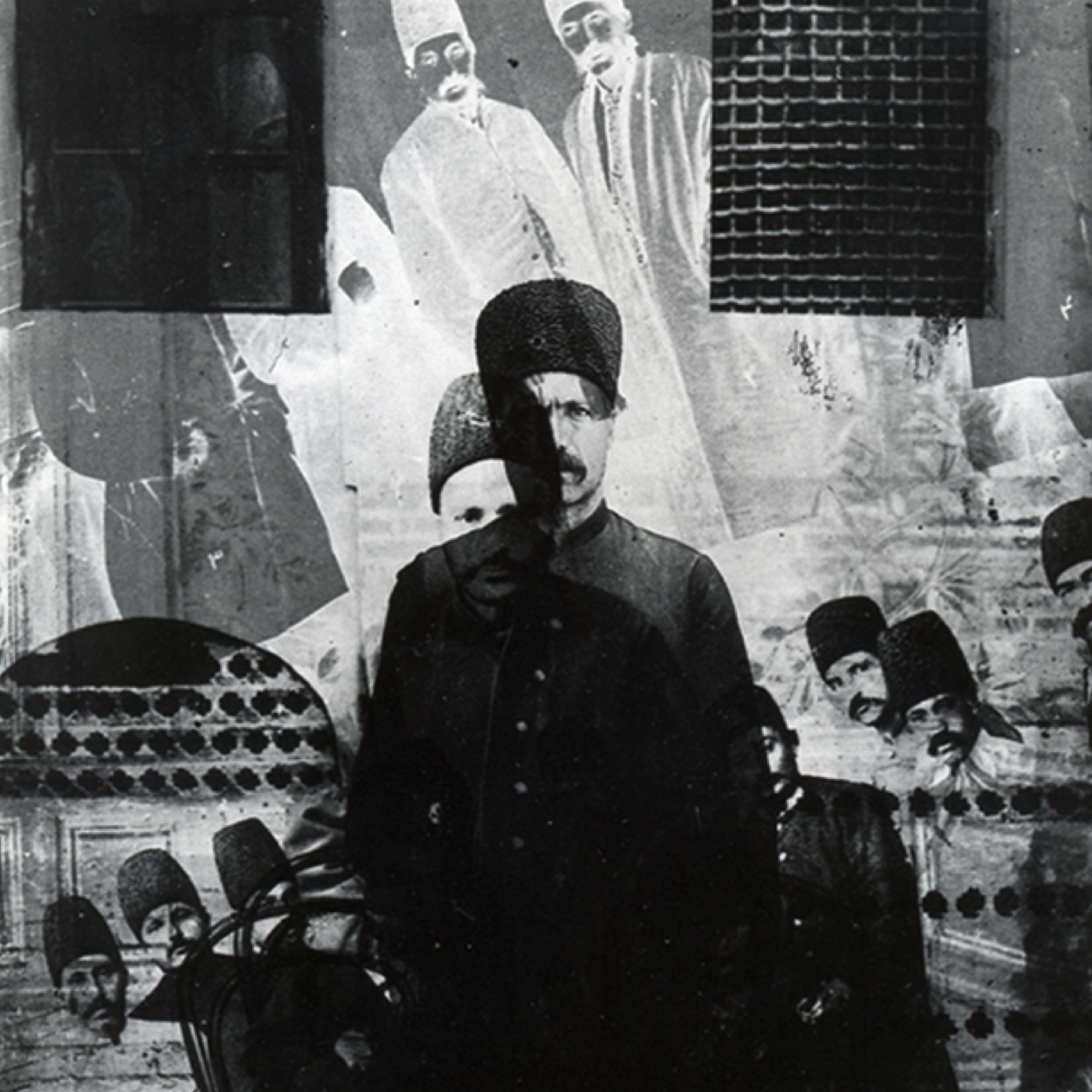From the harems of the Qajars to the Iran-Iraq War - a history of photography in Iran
The emergence of photography in Iran dates back to the mid-19th century, shortly after its invention in Europe in 1839. There have been academic debates regarding the exact date, but according to the remarkable collection of historic photographs in the Golestan Palace in Tehran, the very first photographic images taken in Iran can be dated between 1839 and 1842. The Iranian Qajar monarch, Mohammad Shah (1808 – 1848), was the first person to be gifted a camera by Queen Victoria. After a few training sessions with the instrument, the monarch’s young son – 11-year old Nasereddin Mirza – showed great enthusiasm for it, and became passionate about learning everything about the magic box that captured light.
In the following years, the young prince mastered the technique, and took his camera everywhere with him in the palace, capturing pictures mostly of himself, his jesters and clowns, members of the harem, his servants, royal events, and local monuments, in addition to people of lower social ranks serving the royal family. With his photographs, Nasereddin Mirza brought a certain personal and candid quality to the art of portraiture and self-portraiture in Iran. The future Shah’s passion for photography and documenting everyday life played a crucial role in promoting modern art and the science of photography in Iran as a new form of visual contact with the rest of the world. Not only did Nasereddin Shah promote a new ‘magic’ art in Iran, but also embraced photography’s power as a limelight for his social status as a ‘modern’ monarch.
Since the development of photography in Iran, the camera has been loyal as a means towards political ends. The Qajars relied deeply on the visual arts to confirm and solidify their new positions, and also tried to create an identity for themselves as modernisers and reformers, as well as give a completely new picture of Iran to the Western world. Nasereddin Shah established a contemporary iconography of Iran through his own actions and imagination, drastically different from what European travellers to the ‘Orient’ usually depicted. Although the photographs taken by the young monarch did not portray a genuine image of Iran, they introduced to viewers the dominant visual traditions of the long-ruling Qajar dynasty, and also opened a dialogue between two different representations of Iran and the surrounding region: one presented by local artists, and the other depicted by European travellers.
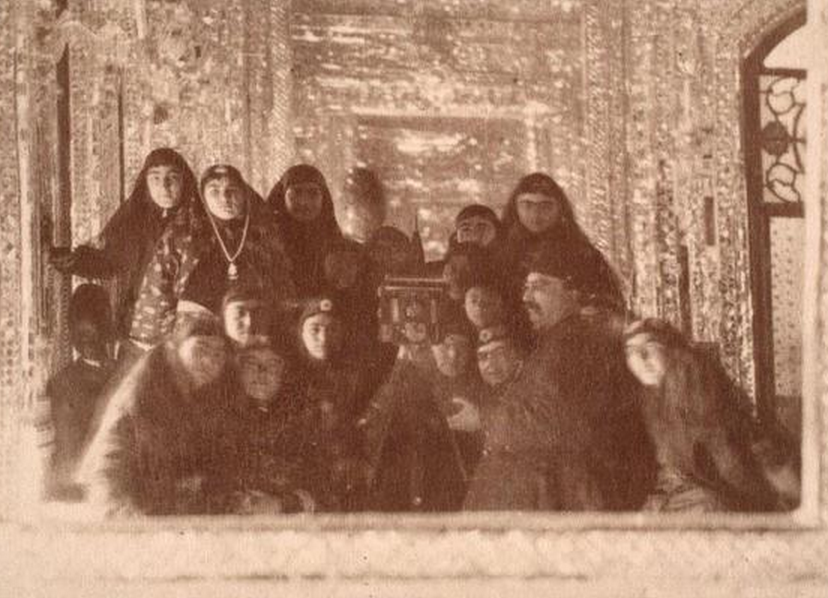
‘Selfies? Been there, done that.’ (Nasereddin Shah and his concubines)
One of the first Europeans who worked in Iran on a mission was the French photographer Jules Richard (1816 – 1891), also known as ‘Rishar Khan’. Richard came to Tehran from Paris in 1844, and was appointed to the Dar-ol-Fonoon faculty by the Iranian government as a language teacher and photography instructor. His knowledge of the daguerreotype process, first made public in 1839, was superior to that of the Iranian photographers of the time, and enabled him to produce high-quality photographs – none of which have survived, unfortunately. Nasereddin Shah also invited several other missions from elsewhere in Europe, such as Austria and Italy, to photograph and document the country, as well as provide instruction at the Dar-ol-Fonoon. Luigi Pesce from Italy, who travelled to Iran in 1848, was the first to photograph Iran’s ancient and historic landmarks such as Persepolis, Pasargad, and Tagh-e Bostan. Moreover, the Iranian-born photographer of Armenian and Georgian descent, Antoin Sevruguin (d. 1933), made a series of unique, now-iconic photographs including portraits of ordinary people, bazaar merchants, cityscapes, and domestic scenes. Sevruguin was more interested in the fine art quality of photography, and unlike most photographs of his era that were not aesthetically executed, Sevruguin paid a high level of attention to the expression, lighting, and composition of his pieces.
Pesce and Sevruguin both had their own commercial photo studios in Tehran, where they took many family portraits and personal photographs of commoners, and made their livings solely as photographers. Sevruguin had two significant impacts on early photography in Iran: first, he travelled across the country and photographed many previously undocumented monuments and landmarks; most of these photographs were later sold to researchers and tourists, and made him the most prominent photographer in Iran at the time. Second, Sevruguin somehow changed the way in which women were presented in photographs. For the first time in the history of Iranian photography, he asked his female models to dress up and pose like European women in 19th century paintings, instead of standing before the camera in traditional Persian garb.
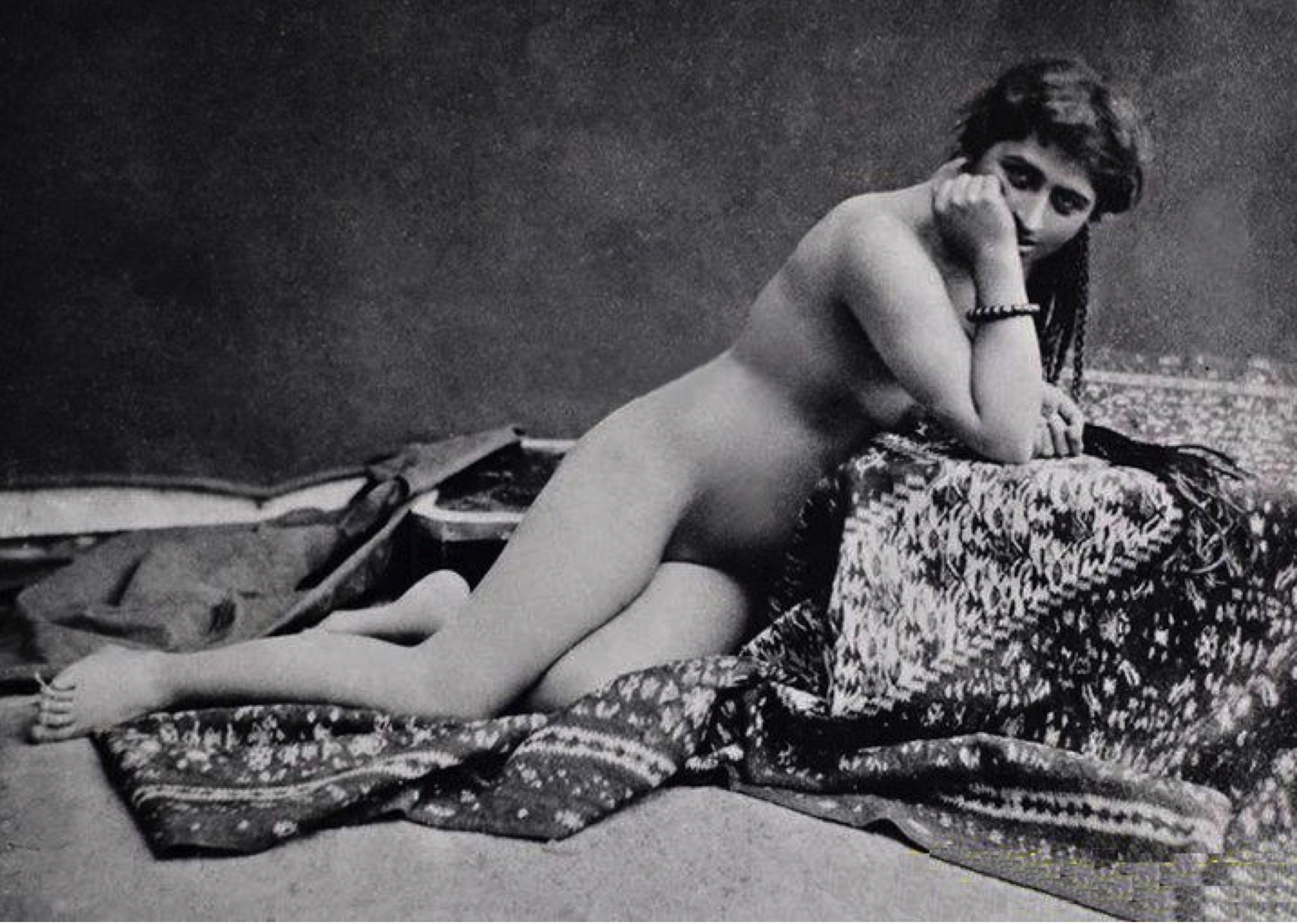
Chador, schmador: a Qajar-era prostitute photographed by Antoin Sevruguin
Although the very first photographs in Iran were taken and presented by European photographers, it was Nasereddin Shah himself who predominantly promoted photography in Iran. With the new art form, the Shah had the chance to take intimate and casual pictures of himself and his family members – something completely new for an Iranian monarch. Photography enabled the young Shah to represent himself as he really was at the moment he stood in front of the camera. When looking at Nasereddin Shah’s self-portraits, one can see subtle Orientalist stereotypes; the nostalgia present in his portraits speak to the intimate connection between Orientalism and photography: the connection that sometimes goes beyond beliefs about the ‘exotic East’, the sensuality, grandeur, and cruelty of the Thousand and One Nights, Moore’s Lalla Rookh, and the scores of Orientalist paintings.
Since the development of photography in Iran, the camera has been loyal as a means towards political ends
Another result of the Shah’s promotion of photography was the rapid cultural exchange that occurred between Iran and Europe in the mid-19th century. Photography and its invention, both in Europe and Iran, inspired many to travel and document their journeys. Despite the difficulty of travelling within Iran, the number of tourists and researchers travelling there increased quickly. Travellers were able to take pictures either on their own, or purchase ones taken by local photographers. This circulation and reproduction of early images of both Iran and Europe represents the role of photography in the complex margins of the modern West, and the ways in which Iran and Europe met politically, as well as aesthetically. In 1868, Abbas Ali Beyg, with the support of Nasereddin Shah’s court photographer Eghbal al-Saltaneh, opened the first public photography studio in Tehran. A decade later, in 1880, the first studio opened in Tabriz, then the second largest city in Iran.
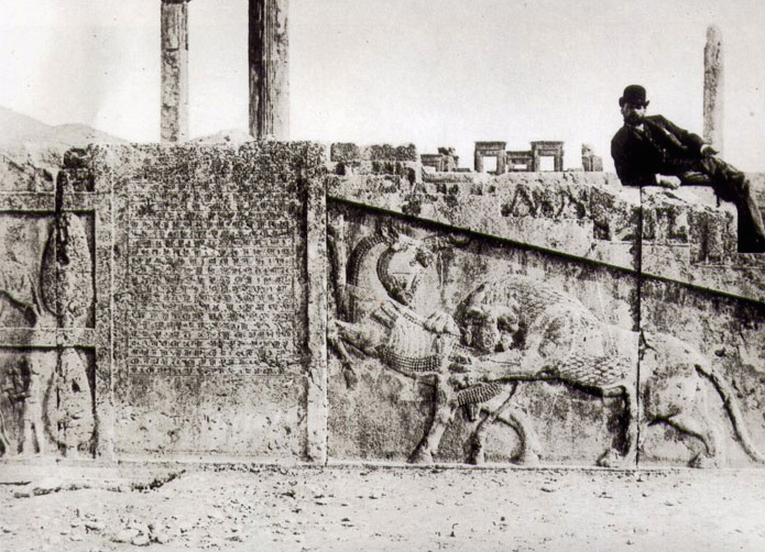
Sittin’ on top of the world: Antoin Sevruguin at Persepolis
The First Pahlavi Era: Towards Modernisation
In the beginning of the 20th century, and with the establishment of the Pahlavi dynasty in 1925, Iran witnessed profound social, political, and cultural changes. Reza Shah, the dynasty’s founder, took major steps during his brief 16-year rule to modernise the country. Large road construction projects were embarked upon, the Trans-Iranian Railway was built, modern education was introduced, and the University of Tehran was established. Reza Shah also ignited the Awakening of the Women Movement (1936 – 1941), which led to the compulsory elimination of the veil for working class Iranian women. His insistence on ethnic nationalism and cultural unity, as well as his policies of forced detribalisation and sedentarisation resulted in the suppression of ethnic and social groups. All the while, the Shah was well aware of his identity, and conscious of the image he wanted to convey as a ruler, and used photography as the primary means to institutionalise his leadership – and in turn, kingship – by injecting a medley of images into the public visual space.
As part of this accelerated modernisation, the Shah destroyed anything that was not ‘modern’ – or rather, Western, as some opined – which included cultural remnants from the Qajar era in particular. 2,000 glass plates by Sevruguin were confiscated on the grounds that they demeaned Iran. Photography, which was once a luxurious pastime of the Qajar kings, became during Reza Shah’s rule a pivotal tool to illustrate society in an expedited transition into the 20th century. With the emergence of the new professional middle class and its lifestyle – especially after the outlawing of the hejab and the change from a traditional to a modern education system – photography became far more convenient than ever before. Family portraiture, wedding photographs, and personal identification photos became more and more popular.
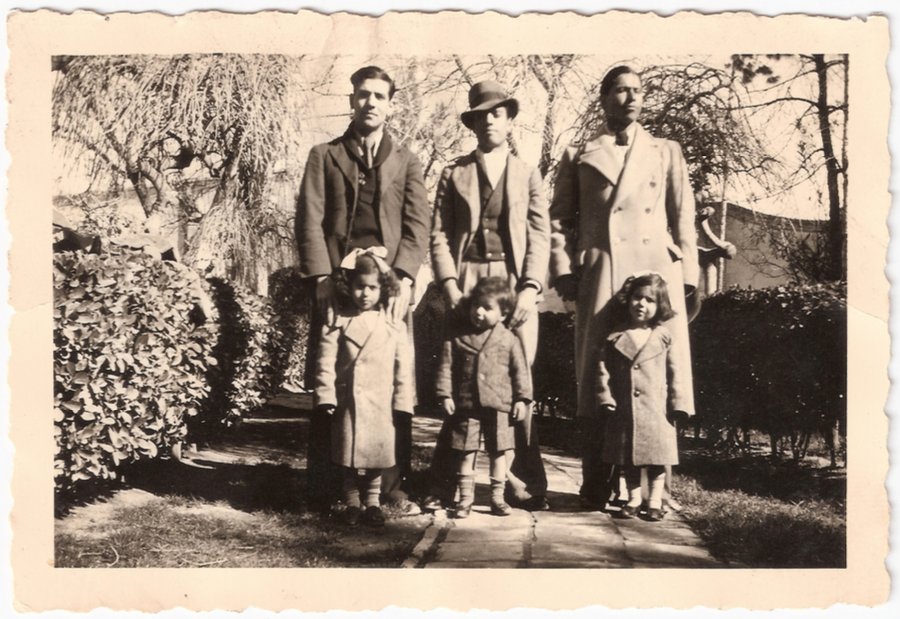
A family photo taken in Tehran in 1938 (photographer unknown; courtesy Ramin Shoraka)
The first and most important change in Iranian photography between 1920 and 1940 was the way women were represented in photographs. Women in the Pahlavi era appeared without any religious coverings, and were seen in modern European poses and outfits for the first time in Iranian history. Photographs of working class women also emerged, the subjects being seen both with and without men, and in public, as opposed to in harems or other indoor settings as in the Qajar era. As well, the subject matter of photographs underwent a shift, as did the uses of photography. The increasing use of photography in journals and books for the purpose of promoting modern lifestyles, wedding photography, family portraits, studio portraits (especially after the banning of the hejab), and an excessive demand for ID photographs for official use all led to a new chapter in the history of photography in Iran.
The Second Pahlavi Era: Modernism in Iran
In 1941, during the Second World War, the allied powers of Great Britain and the Soviet Union invaded Iran and forced Reza Shah to abdicate and live in exile, on account of his refusal to cooperate with them against the Germans. In his place, his son, Mohammad Reza Pahlavi, ascended the throne. With the coming of the new king, Iran’s arts and culture scene began to flourish. The press and media became increasingly active, young emerging artists and art students showed a great interest in the artistic, cultural, and intellectual output of the West, and art publications and art criticism began to circulate in conjunction with the establishment of art institutions, galleries, and museums, particularly during the 60s and 70s. National and international exhibitions were held in Iran, including the Shiraz-Persepolis Festival of Arts (1967 – 1977), and the Tehran International Art Fair in 1977.
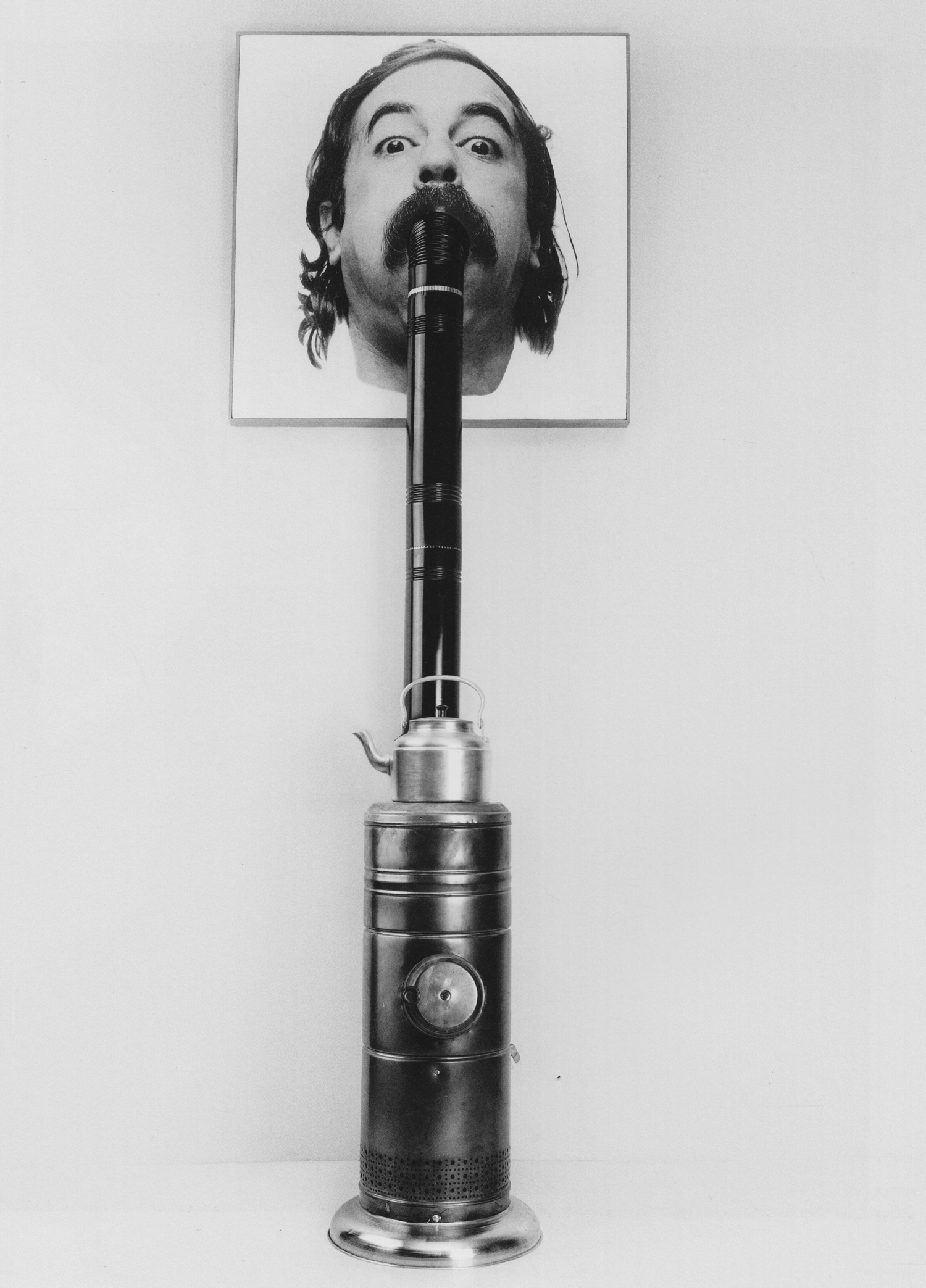
Ahmad Aali - Tehran: Self-Portrait, 1964
Following the end of the Second World War, Iranian artists began to tackle social and political issues. As well, they started to think not only about creating conceptual art, but also writing about it, too. Additionally, Iranian artists began receiving domestic and international recognition for their work, and saw their pieces exhibited in such places as New York and the Venice Biennale. Where photography is concerned, the 60s and 70s have been recognised as crucial and formative periods in the development of contemporary Iranian photography, which witnessed the emergence of fine art and conceptual photography, the first solo exhibitions, and the publication of photography books and magazines, such as Majalleh-ye Aks (Photo Magazine) and Tasvir (Image). During this period, photographers also showed an increasing enthusiasm for experimenting with new and alternative processes such as photomontage, collages with photographic prints, and writing, painting, and drawing on photographs. Conceptually, they were influenced by the social and cultural transformations of the time, which caused their work to be more critical and questioning of the Pahlavi regime. In the words of the prominent historian and art critic Babak Ahmadi:
Critical thinking and reflection on cultural issues appeared in a number of prominent intellectual works in the 60s, and [an] unarticulated desire for new political life was replaced with a much higher and more challenging goal: demanding innovation in language, and thought and rationality in cultural works.
One of the fine art photography pioneers, who was also the first photographer in Iran to have a solo exhibition in a gallery, is Ahmad Aali. Born in 1935 in Tabriz, Aali has been considered the father of fine art and conceptual photography in Iran. ‘… His direction was one of resistance against what he called the decorative tendencies in the art of his time’, writes curator and art historian Dr. Fereshteh Daftari in an article entitled Redefining Modernism. Another leading figure of the 60s and 70s was Dr. Hadi Shafaieh, also known as a ‘father’ of modern photography in Iran. A former pharmacologist, Dr. Shafaieh began his professional photography career at an early age in his hometown of Tabriz, and later opened the Hadi Studio in Tehran, to which he invited intellectuals such as Ahmad Shamloo and Nima Yushij to photograph them for the first time in Iranian history. Dr. Shafaieh’s dedication to the art finally led to the development of the first undergraduate photography programme in Iran at the University of Tehran in 1982, which he directed until 1987. A major turning point, contemporary Iranian photography is still based upon Dr. Shafaieh’s ideas and what his first graduate students brought into the courses.
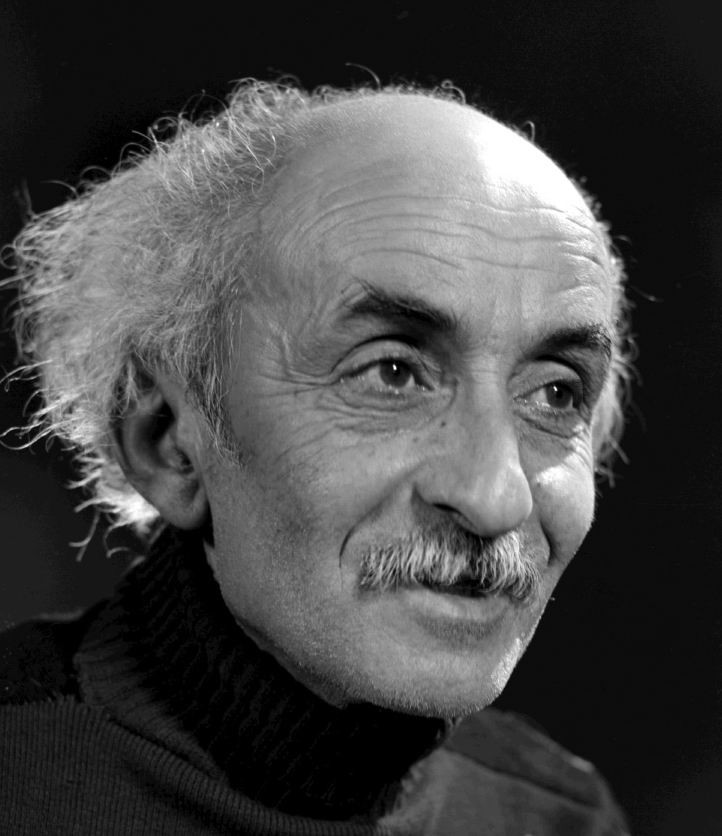
Nima Yushij photographed by Dr. Hadi Shafaieh
Despite the Shah’s push towards modernity, the appreciation of the arts and art education were behind at the time. Iranians still looked at the arts and photography as a hobby; there was no recognition or deep understanding of the actual meaning of the nature of the arts, until the Tehran Museum of Contemporary Art opened in 1977 with the support of Empress Farah Pahlavi. The museum was based on a Western model, and for the first time in Iran, represented a panoramic overview of national, as well as international art. Only two years after its opening, the Iranian Revolution took place, drastically altering the course and conception of visual art in the country.
The Revolution and the Iran-Iraq War
During the period of civil unrest lasting from October 1977 to January 1979, photography played a significant role in documenting the Revolution. As well, photojournalism became the main medium for recording and reporting the severity of the situation and the sociocultural transformation of Iran to the world. The early years of the Revolution are perhaps best presented in journalistic documentations, such as those of the Iranian-French photographer Abbas Attar (a.k.a. Abbas), who, in his own words, became ‘actively involved’ in the Revolution and captured both its fervour and its excesses. Several other photographers also well-illustrated the Revolution and its concomitant changes. Bahman Jalali, along with his wife, Rana Javadi, documented the Revolution in a photography project entitled Days of Blood, Days of Fire, published as a book – the first in Iran about documentary photography with a sociopolitical context –with the same title in 1979 in three editions. Moreover, Kaveh Golestan – who was killed on an assignment in Iraq in 2003 when he stepped on a landmine – was a towering figure in the realm of activist journalism. Golestan was an eyewitness to the Iranian Revolution as well as the Iran-Iraq War (1980 – 1988). His photographs not only captured the politically upheavals that radically changed his country into an Islamic republic, but also intimately portrayed a society and people in a time of shockingly rapid transition.
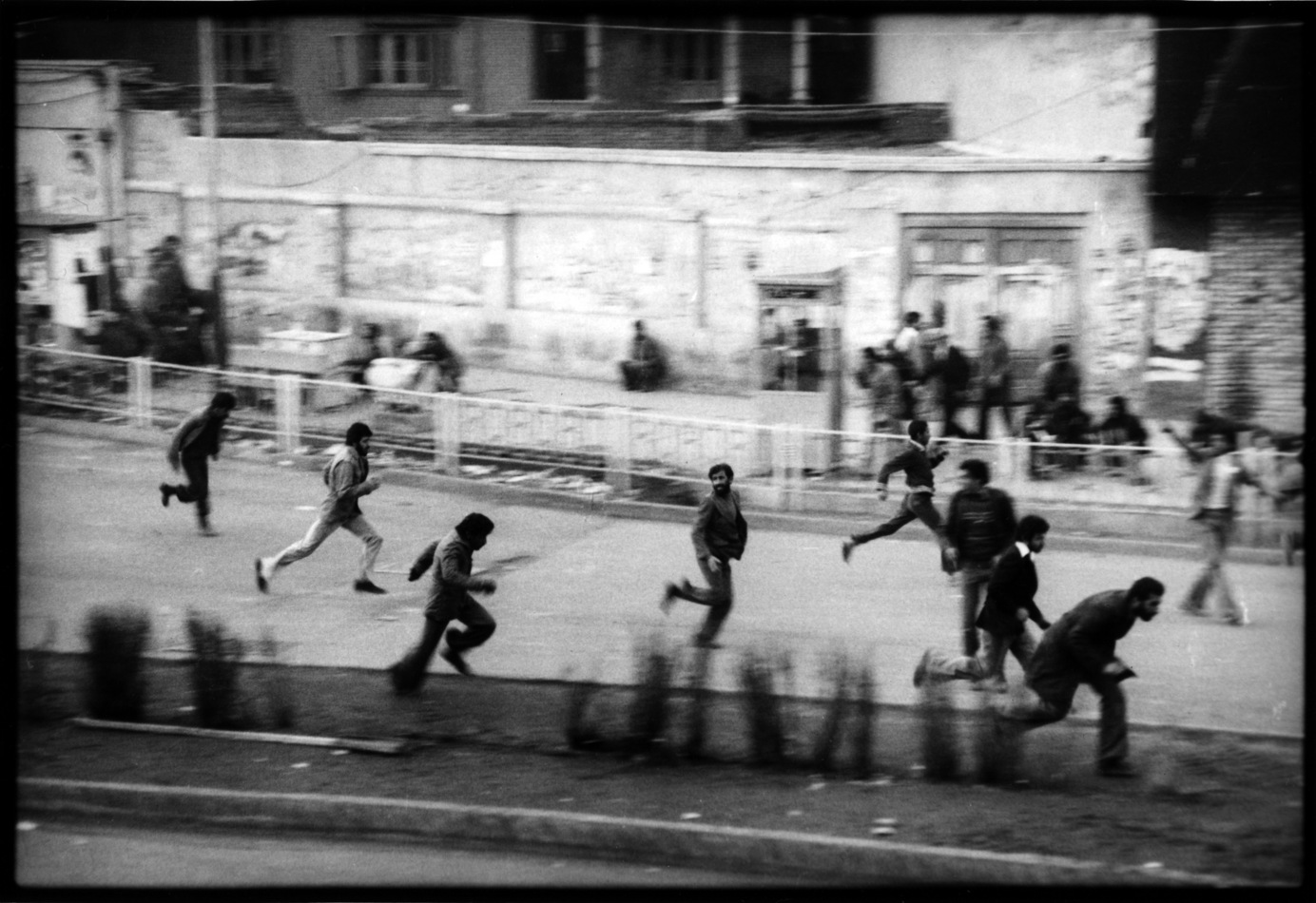
A Revolution scene in Tehran from Bahman Jalali and Rana Javadi’s Days of Blood, Days of Fire series
When photography emerged in Iran, it was used only by the wealthy to represent their power; now, it is being used as a crucial tool for social and political activism, as well as for aesthetic pursuits
As a powerful visual tool for inciting sociopolitical rebellion and military conscription, photography experienced brief but significant bursts of production during the periods of the Revolution and the Iran-Iraq War. Photographs, murals, and posters, in particular, were used for motivational propaganda aimed at mobilising the public behind a variety of war efforts. Iranian war photographs and the visual culture associated with them have not been the subject of much scholarly attention, despite the fact that they were produced in large quantities, placed on the walls of buildings throughout Iran and on placards during demonstrations, thereby serving as pictorial purveyors of warlike ideologies in the Islamic Republic. For these reasons, and because they are in essence the creative forerunners to Iran’s distinctive approach to documentary photography and photojournalism, they reveal how photography has been crucial in creating a particular kind of contemporary visual culture of the Middle East, and most especially, post-Revolution Iran.
Although photography reigned supreme in Iran during the 70s and 80s, photographs from these decades have been ignored, or at least, not studied adequately enough for a number of reasons. First, many pivotal images are not easily accessible and available for study. Most of the photographs from the Revolution and the Iran-Iraq War have been banned from publication by the Iranian government, and many photographers and collectors have not published their photographs due to such restrictions. Second, conceptually, many photographs of wartime Iran depict notions other than the ones the government was, and is trying to convey. ‘In revolutionary Iran, images were only acceptable if they promoted an Islamic lifestyle, the glory of the Islamic Republic, or the sanctity of the Imam’, writes Roxanne Varzi in her book Warring Souls: Youth, Media, and Martyrdom in Post-Revolutionary Iran.
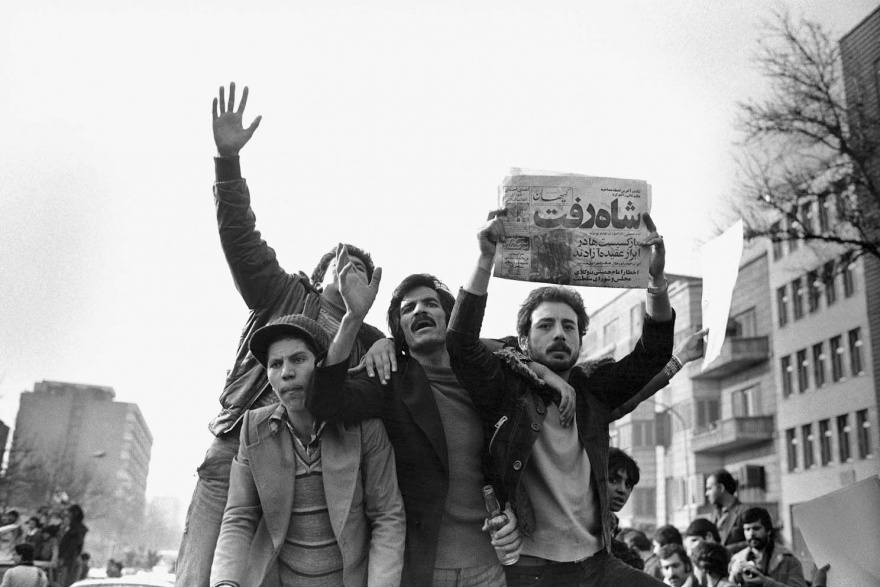
The end of an era: revolutionaries hold up a newspaper with the headline ‘The Shah Left’ in 1978 (photograph by Kaveh Golestan; courtesy Silk Road Art Gallery)
From Nasereddin Shah’s palaces to the battlegrounds of the Iran-Iraq war, Iranian photography has travelled a long journey towards its present state. Photography emerged in Iran in the mid-19th century, but since then, has taken a totally different path in relation to European photography. Since its introduction into Iran, the art and science of photography have been intertwined with politics, and have been evolving in association with the traumatic social upheavals of the last two centuries. When photography emerged in Iran, it was used only by the wealthy to represent their power; now, it is being used as a crucial tool for social and political activism, as well as for aesthetic pursuits. The women previously photographed in harems by their husbands, for example, are now behind their own cameras. With their photographs, Iranian women are telling stories of power and passion, challenging stereotypes, and providing insight into the social and political issues of contemporary Iran.
Cover image by Bahman Jalali.
